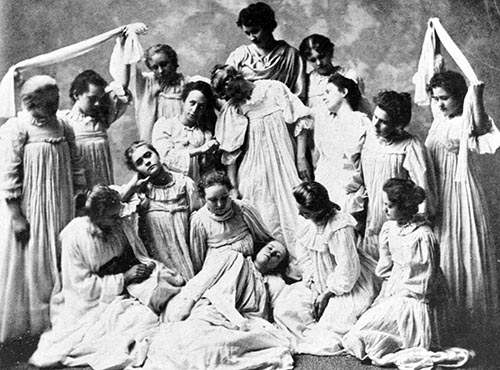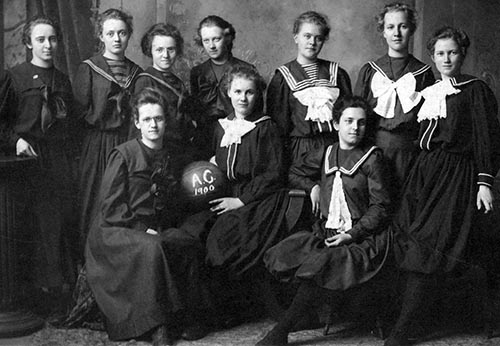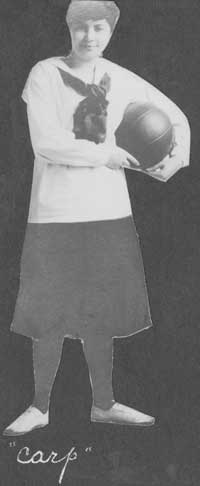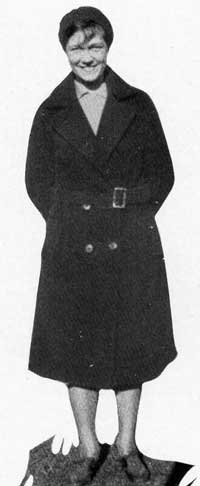Women cast off the stays and run with the ball
(This story was written in celebration of Augustana's sesquicentennial in 2010.)
"The honor which the co-eds have brot [sic] has, perhaps, not been so great as that which the boys have brot, nor have they triumphantly borne home any shield. But who knows what they might do if given a chance?"
Blanche Carpenter, a.k.a. the aggressive and indefatigable "Carp" of women's basketball, wrote this in 1917, when her team had played and won four games. Her words encapsulate the early history of women's athletics at Augustana: getting chances to prove "what they might do."
Those chances came slowly. Amid a cultural milieu that looked warily at the robust woman, especially if her limbs were uncovered, Augustana's first gym class for women was organized in the 1890s. Attired in securely fastened high-necked blouses, "voluminous bloomers," and skirts "a daring eight inches from the floor," the students cast off bustles and stays and engaged in "proper exercises, movements, marches, etc."
By the first decade of the 20th century, strict propriety yielded to competitive vigor. Women were cycling, playing tennis, and facing off against Macomb, Normal, and Monmouth in basketball. In 1919 the Woman's Club successfully petitioned the college to hire a "girls' gymnastic teacher," and requested time in the newly built gymnasium.
But those efforts weren't sufficient, according to 1920s student Maude Adams. Not until 1924, she claims, did Augustana "at last become interested in girls' athletics" which "have been held down until a few energetic workers have given their attention to that fact..."
'Every girl an athlete'
The leader of these "energetic workers" was Anne Catherine Greve, Augustana's first director of women's athletics. Under Greve, who assumed faculty status while still a student at the college, women's athletics did indeed "bloom forth." Young, fit, and pretty, with short curly hair and an engaging grin, Greve nevertheless knew how and where to apply pressure to achieve her goals.
Chief among those goals was defined in her slogan: "Every girl an athlete participating in at least one sport," and in her decade-long tenure at Augustana she came near making that happen. The sheer variety of sports she organized, usually with just one paid student assistant, is amazing: two girls' varsity basketball teams, baseball, volleyball, and tennis teams, a Red Cross Lifesaving Corps, archery, horseback riding, and riflery programs.
She also served as advisor for the Augustana Girls Athletic Association and the elite Valkyries squad. By the time she left in 1934, Augustana not only held its own with other schools of comparable size, but could "justly...boast...one of the most highly developed girls' athletic departments of any college in the state."
It took some fighting. The yearbook records frankly that to gain facilities space and practice time Greve and her "girls" had to buck "conservative thought, sarcastic word, and common practice."
Greve's work ushered in the impressive growth of women's athletics under her successors Jane Sweet Brissman, Janan Effland, Diane Schumacher and Liesl Fowler. Today Augustana women participate in intercollegiate basketball, cross country, softball, soccer, swimming, tennis, track and field, volleyball, and most recently lacrosse. They've racked up College Conference of Illinois and Wisconsin (CCIW) titles in basketball, cross country, swimming, track and field, soccer, and volleyball — all when "given the chance."
Blanche Carpenter could have predicted it.
— Ann Boaden
Department of English




